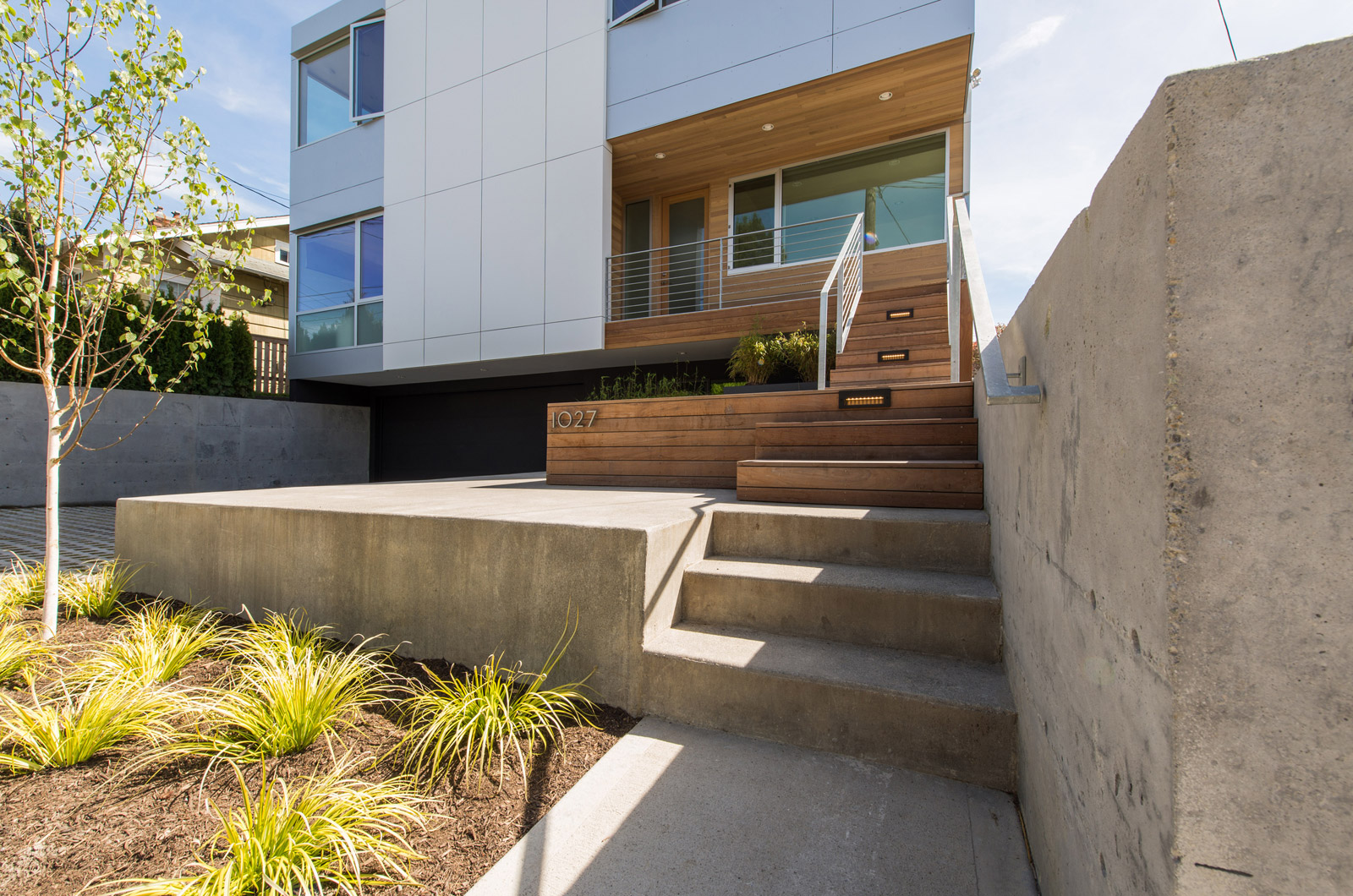
[All photos by BUILD LLC]
One of the primary reasons that we maintain our Case Study House series is to experiment with design ideas on our own homes before we propose them on the projects we design for clients. In addition to the structure itself, these ideas extend to the surrounding property, and the Case Study House 2014 was an excellent testing ground for several landscaping ideas. We sought out some informal help via a trade in services from our friends over at Langstraat Wood, and Erik Wood was kind enough to provide some guidance on basic landscape concepts and plants, particularly at the public face and site edges. The landscaping in this project (as with most) was designed to grow, fill-in, and mature over time. Subsequently, the experiment is ongoing, but between the design phase, the implementation, and taking the final photos, we’ve observed enough potential to share what we’ve learned so far. Let’s start from the top and work our way down.
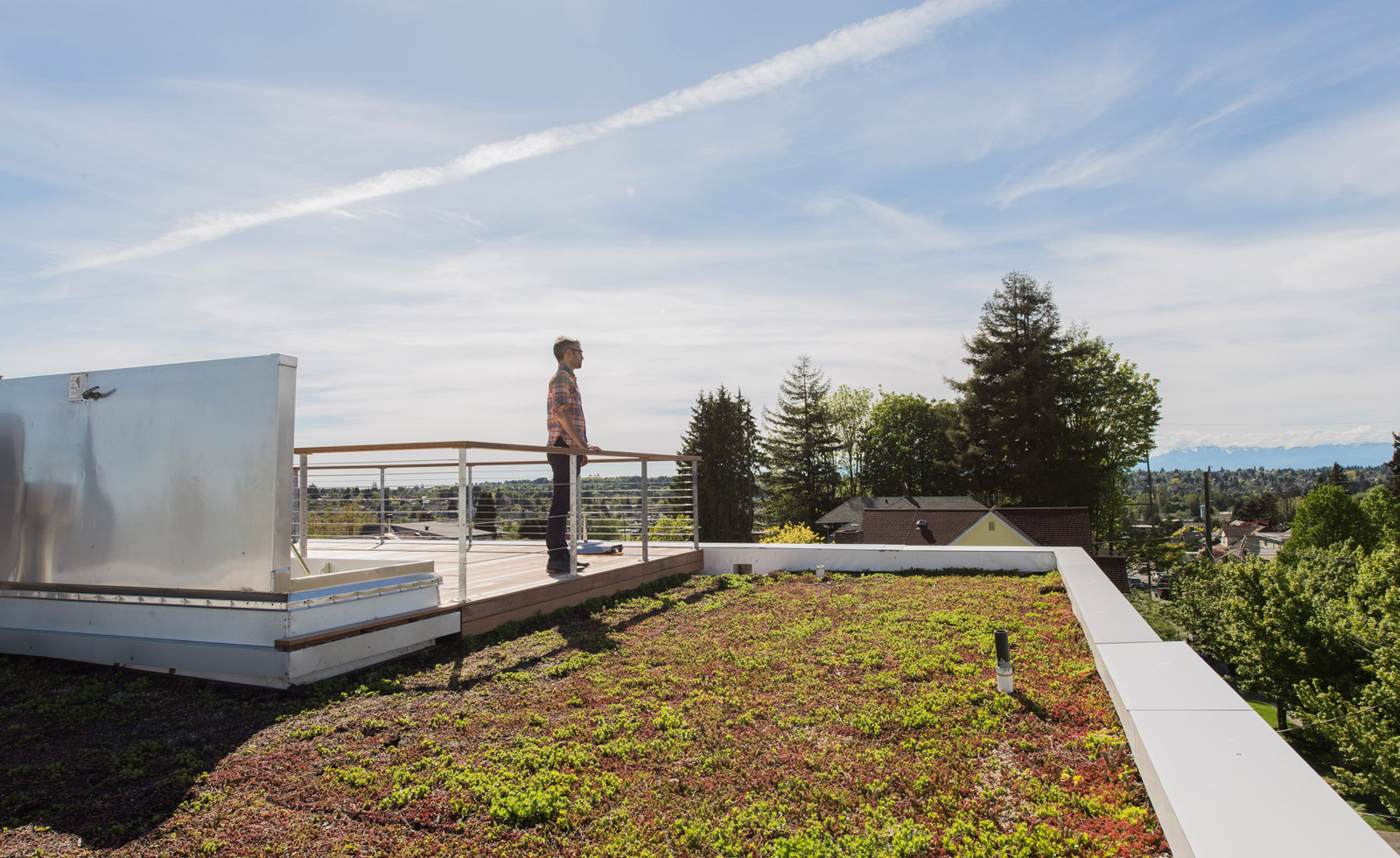
The green roof designed into the CSH2014 is important for a number of reasons. Many building departments now impose limits and requirements around the amount of impervious surface area proposed on a project. The definition of “impervious” varies by jurisdiction, but it generally refers to things like roofs, concrete flatwork, and the like which don’t allow water to infiltrate soil. In the City of Seattle, where this project is located, site mitigation is required for a single family house footprint exceeding 1,500 square feet of impervious surface. In this case, a percentage of the green roof offsets the additional area of impervious surface to satisfy the municipal code. In the event of heavy rainfall, there is a technical advantage to this system as the green roof retains storm water, limiting the surcharge on the city storm sewer system. From a lifestyle standpoint, the green roof softens the roof deck, creates an enjoyable all-season and all-weather landscape, and keeps a bit of direct sun off the roof. There are many green roof systems to choose from and the CSH2014 uses the pre-vegetated Xero Flora mats largely due to the straightforward install which was completed in one day.
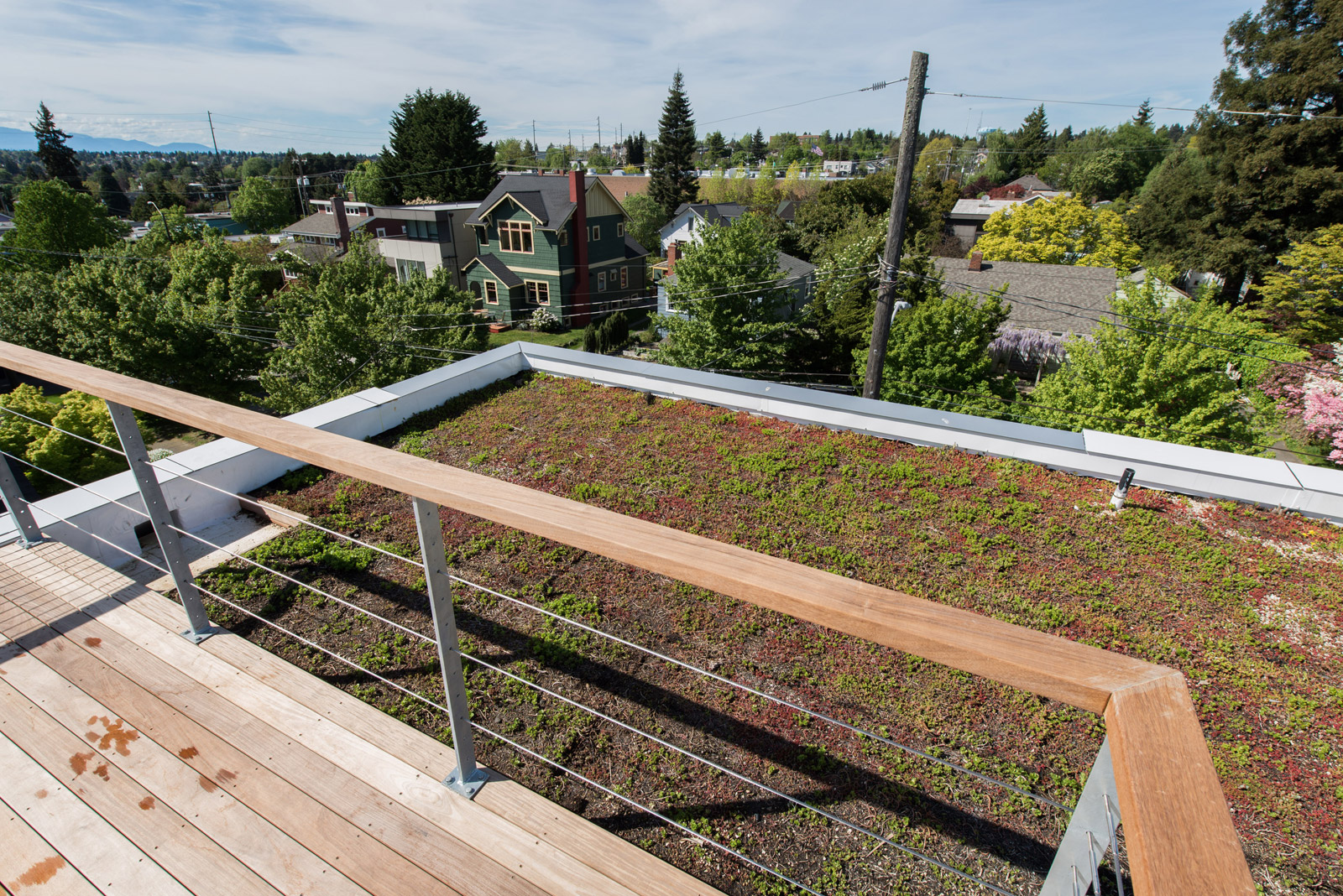
The front entry sequence plays an important role on the CSH2014 and owes its success in part to landscape design. Because the entry to the home sits approximately nine feet above grade, access is created through a series of terraces, each a feature custom designed for the house. These terraces make the approach feel less like a long stairway and allow for a neighborly front stoop experience as well as providing bleachers for any impromptu sporting events that may take place in the driveway. The poured concrete stoop supports framed stairs above with ipe decking and galvanized steel guardrails. Recessed step lights illuminate the pathway at night.
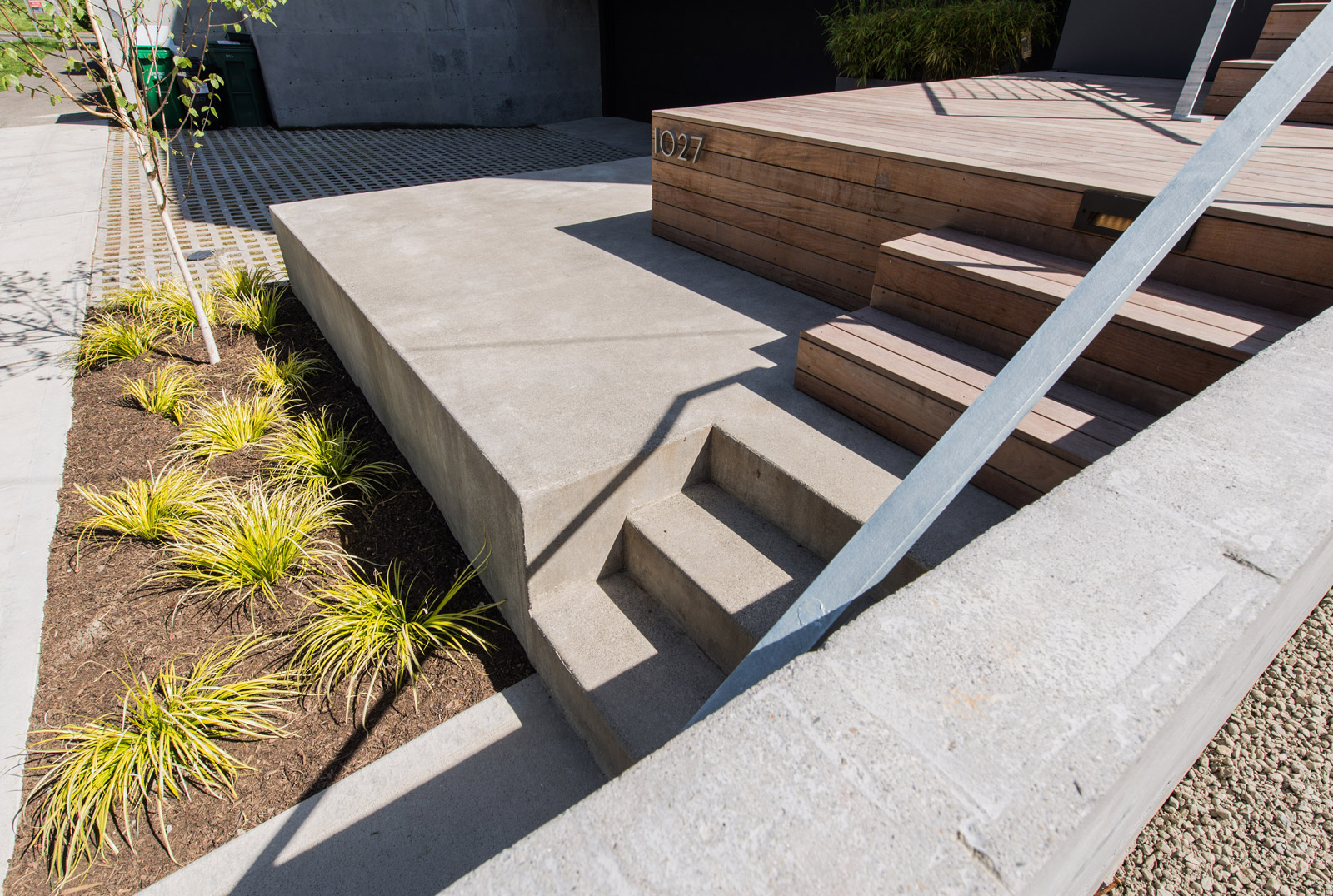
Bamboo in dark grey planter boxes by Loll provide a subtle backdrop of greenery and hide a private basement entrance without detracting from the stoop and formal entrance. We’re big fans of these planter boxes: they’re made from recycled plastic, they’re well engineered and show up flat packed, and don’t easily fade from sun exposure. A few smaller models of the Loll planters are also located on the upper level deck for kitchen herbs.
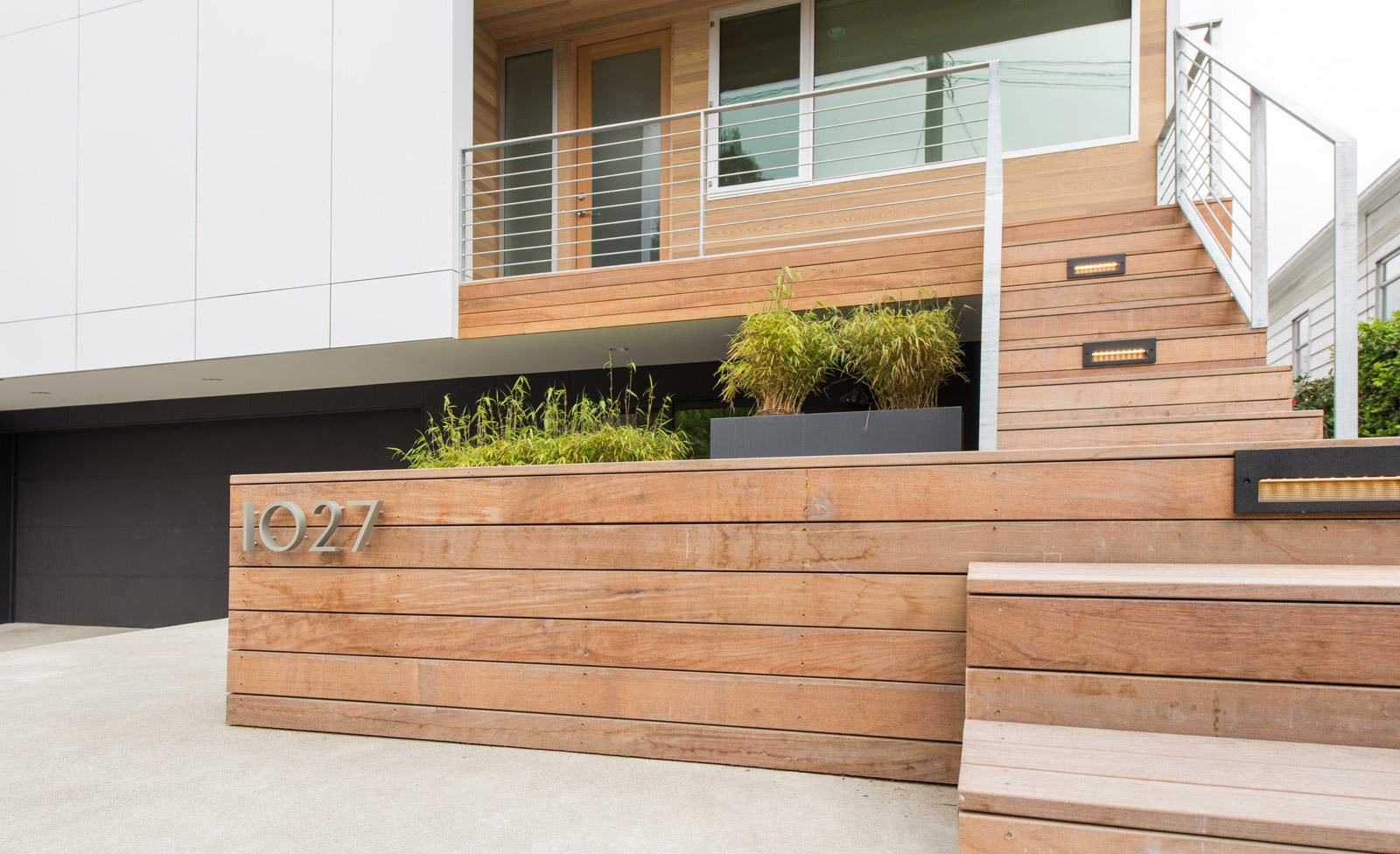
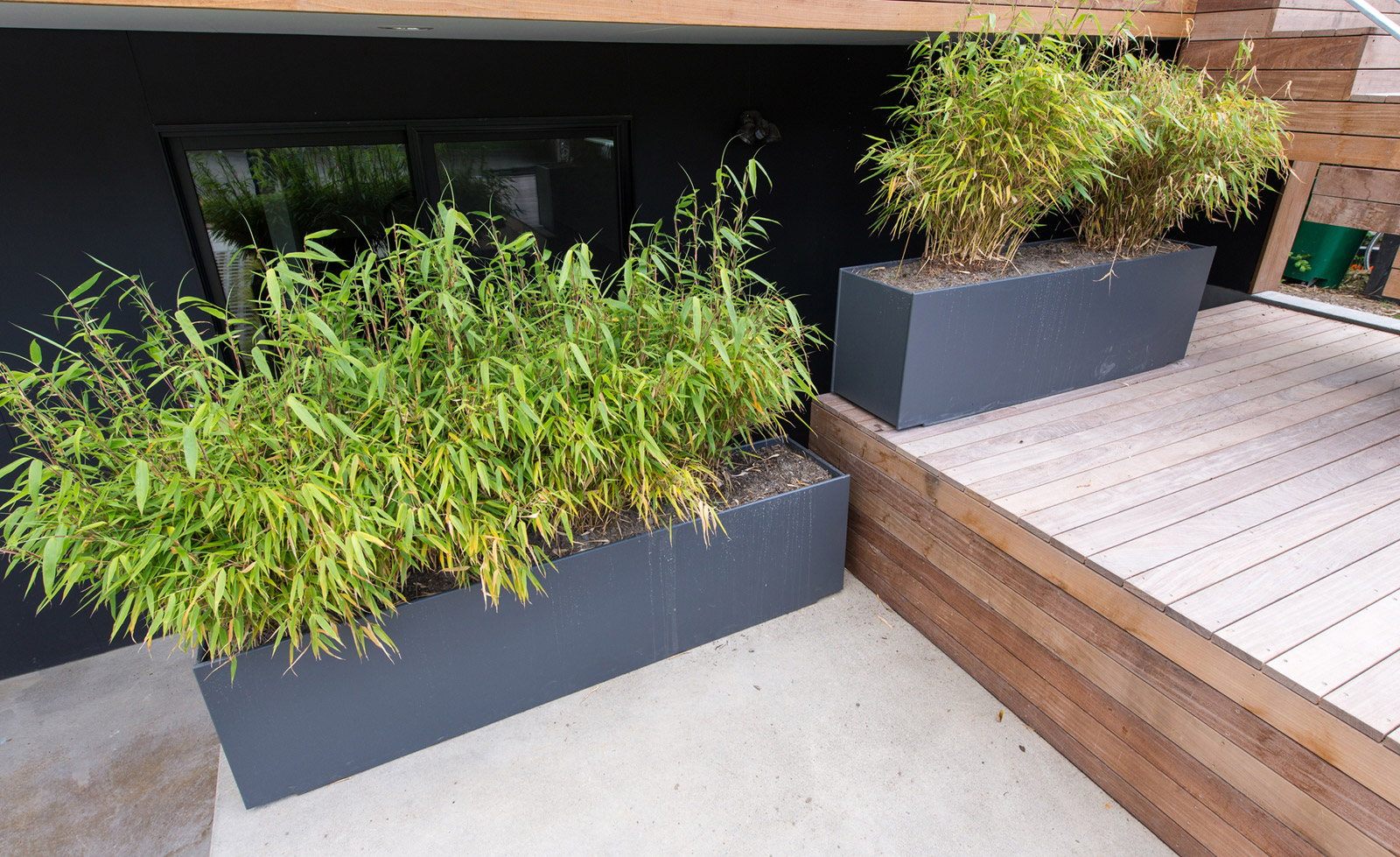
Turfstone permeable grid pavers were used at the driveway to soften the street-side experience while still providing a handsome and solid driving surface at the garage approach. Installed on a proper base of washed rock and sand, Turfstone is considered pervious and thereby helps to keep the impervious square footage lower. The project required five pallets of the pavers over a rock and sand base. The pavers are made to go diagonally (or ‘on the points’), but we found that straightening the grid to align with the architecture creates a much more refined appearance. This orientation requires more cutting and fitting but the final result is worth it. Once they’re set in place, sand is used to fill the voids, which also slowly fills any gaps or airspaces below them following the final leveling and tuning performed at install. For this application, moss was harvested from neighboring parks and placed in the cells. Currently dormant due to a dry spring, the moss will come back to a more vivid color this fall. We avoided using grass in the pavers since that becomes a maintenance condition, not only in having to mow your driveway, but also having to tend to grass that is getting run over in some spots and left alone in others. More often than not, this doesn’t look or feel very good. The moss will grow and fill-in over time, softening the hardscape and providing a rare tactile experience of touching Pacific Northwest nature at the entry.
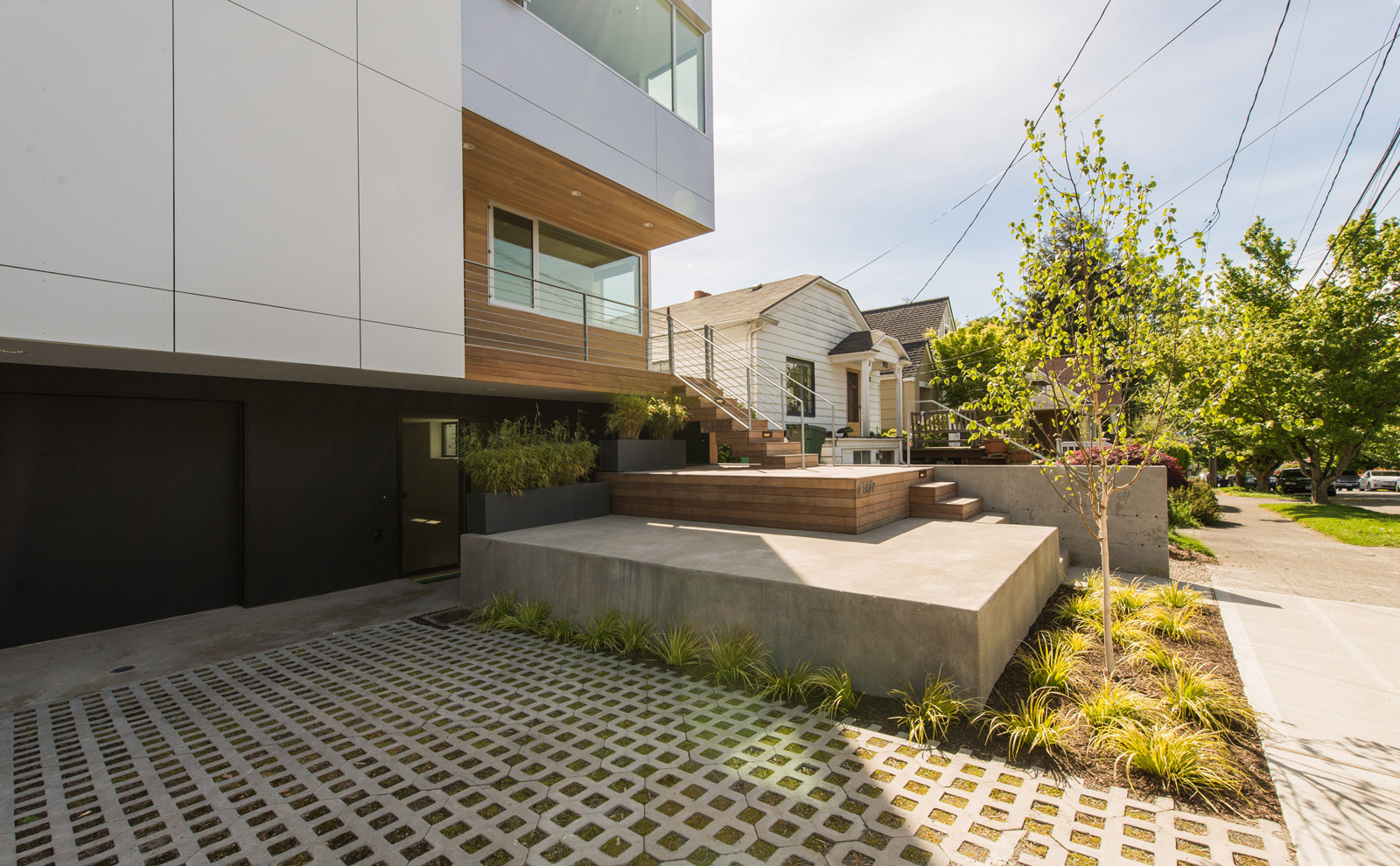
Ogon Variegated Sweet Flag grasses were used between the driveway and stoop to soften the concrete edges, which will eventually grow out to fill the planting areas. They were chosen as they perform well in shaded areas (like the north side of the house here), they also provide a low-maintenance and subtle field of color to welcome guests. Between the stoop and the sidewalk, a tight grouping of Jacquemontil Birch trees create a grove feel.
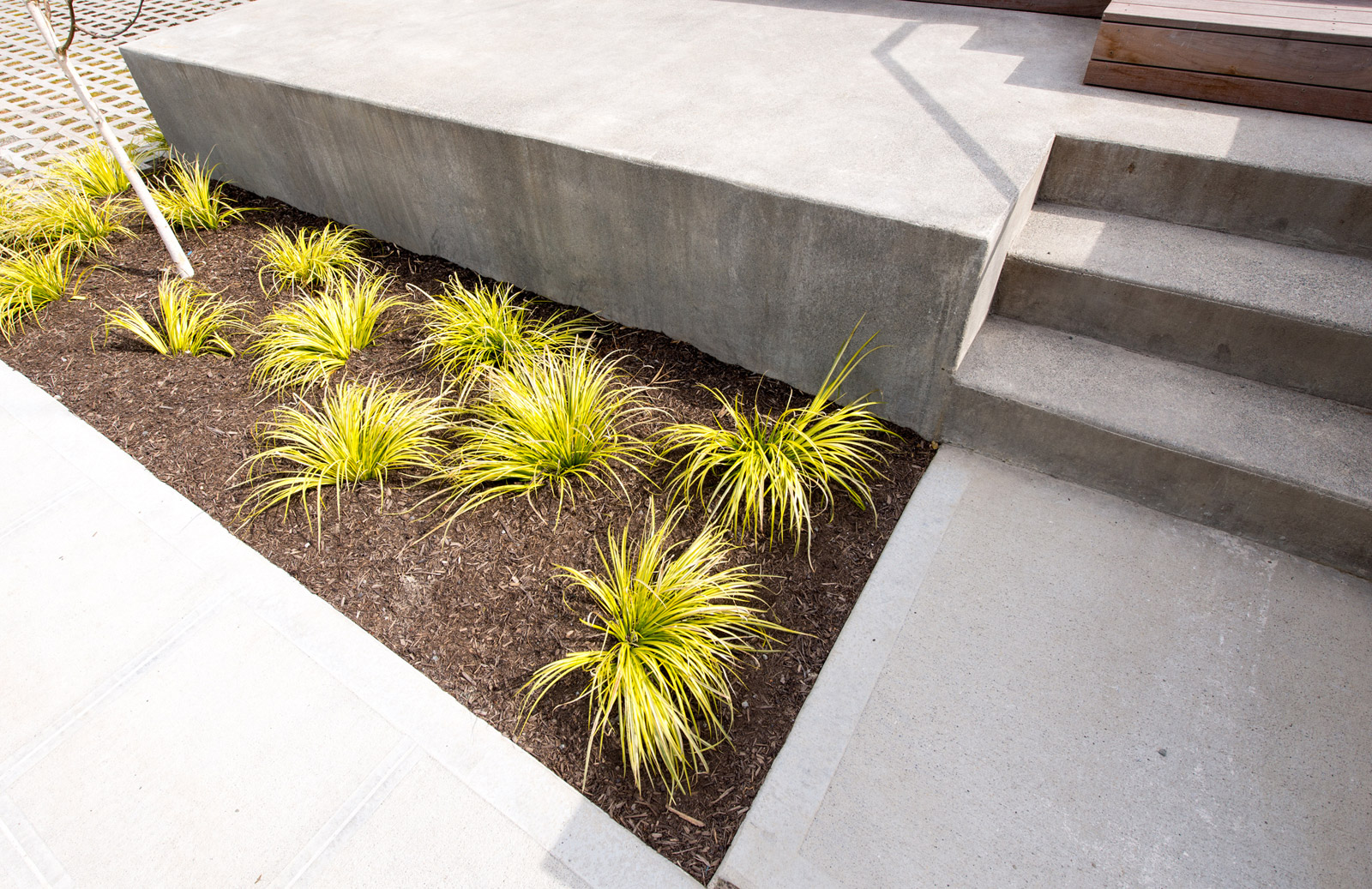
A small sliver of earth resides at the east sideyard between the concrete site wall and the neighboring retaining wall. Salal was a good solution for this area as it grows quickly and has a similar appearance to ivy, but doesn’t climb and stick to vertical surfaces. This application makes it less convenient for uninvited persons to access the sideyard from the street, but it can still be walked through for occasional maintenance.
At the west sideyard, a 5/8” minus crushed rock base with at 3/8” minus topping was used for pathways. This provides an easily maintainable groundcover for foot traffic and pass through zones.
Moving to the backyard, a row of Emerald Green Arborvitae, the classic privacy hedge, is used along the east property line. Planted rootball to rootball, they create an instant hedge. Once established, they are fast growing to provide a soft landscape screen and can eventually be trimmed to create a more architectural landscape element.
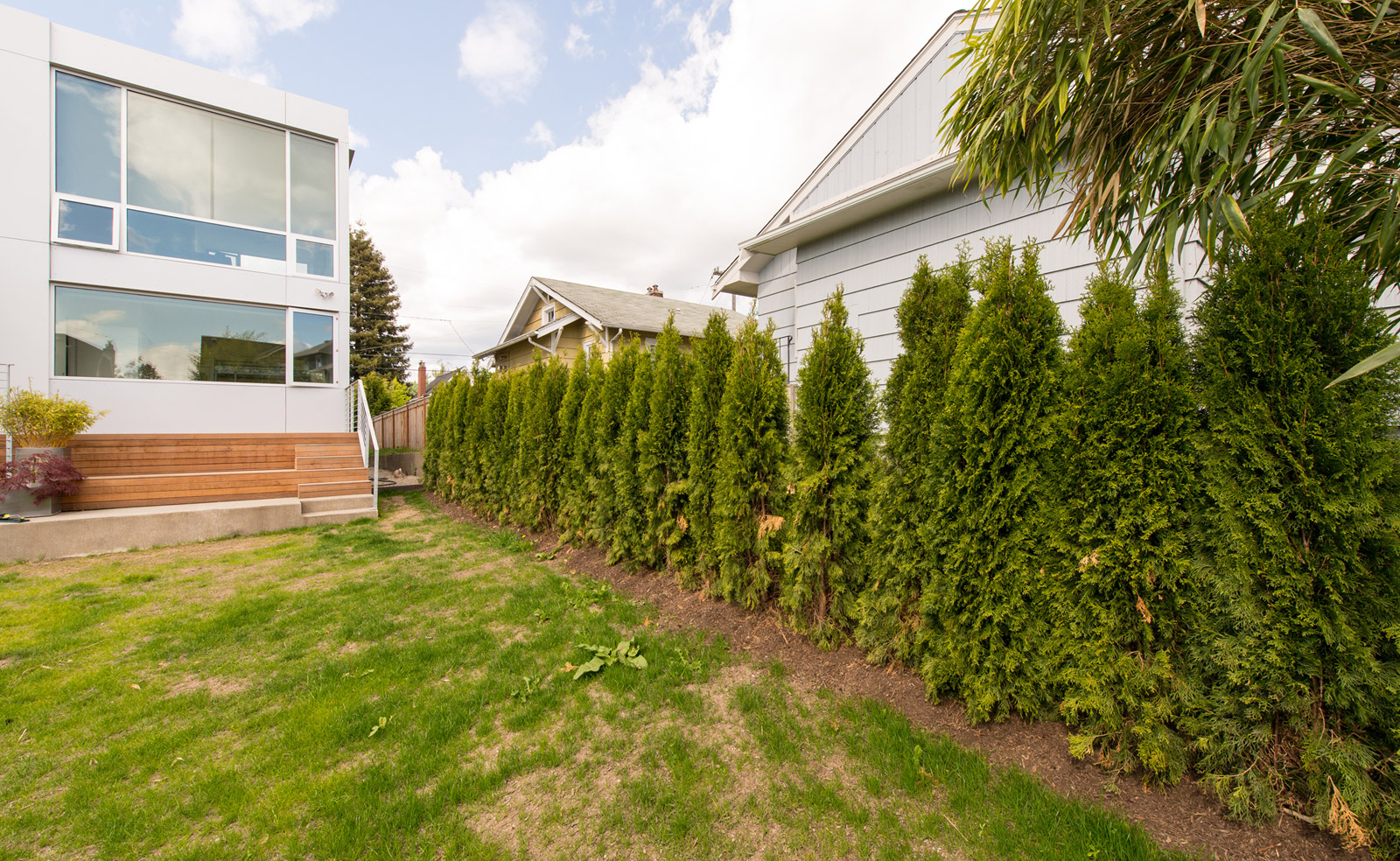
Below the structure’s cantilever, a Sword Fern garden is used to provide a fun ‘moment’ between the house and art studio. This condition is appropriate for ferns as it provides a likeness to a shaded Pacific Northwest forest understory.
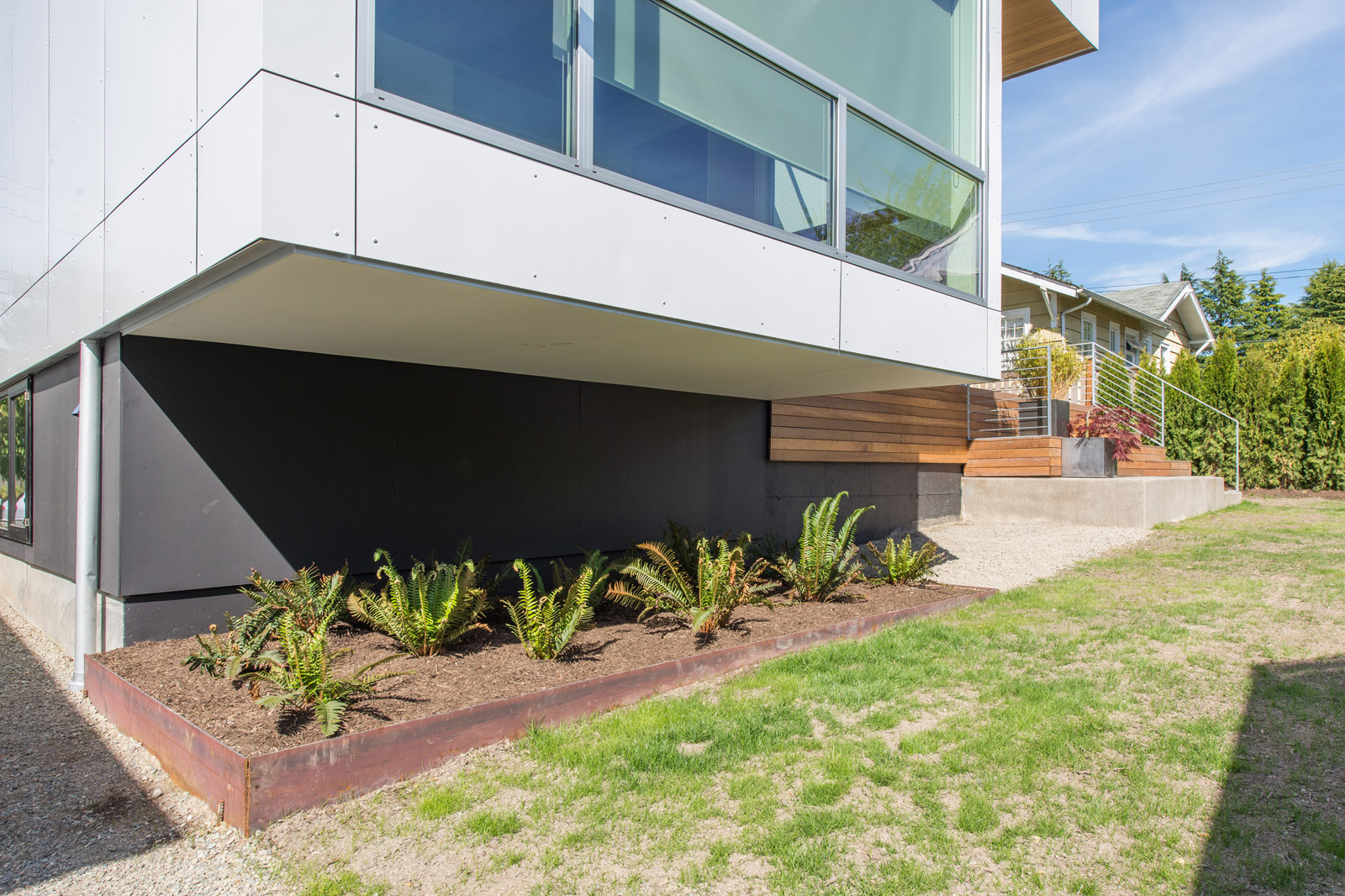
In the open canvas of the backyard, a northwest shade-tolerant grass seed was planted. Depending on the amount of yard use, the family is considering broadcasting out a clover mix if they choose to get chickens and build a modern version of a combined henhouse and chicken tractor. At the south property line, a row of Jacquemontil Birch trees will provide privacy at the bedroom level for much of the year but allow for winter light from the low sun.
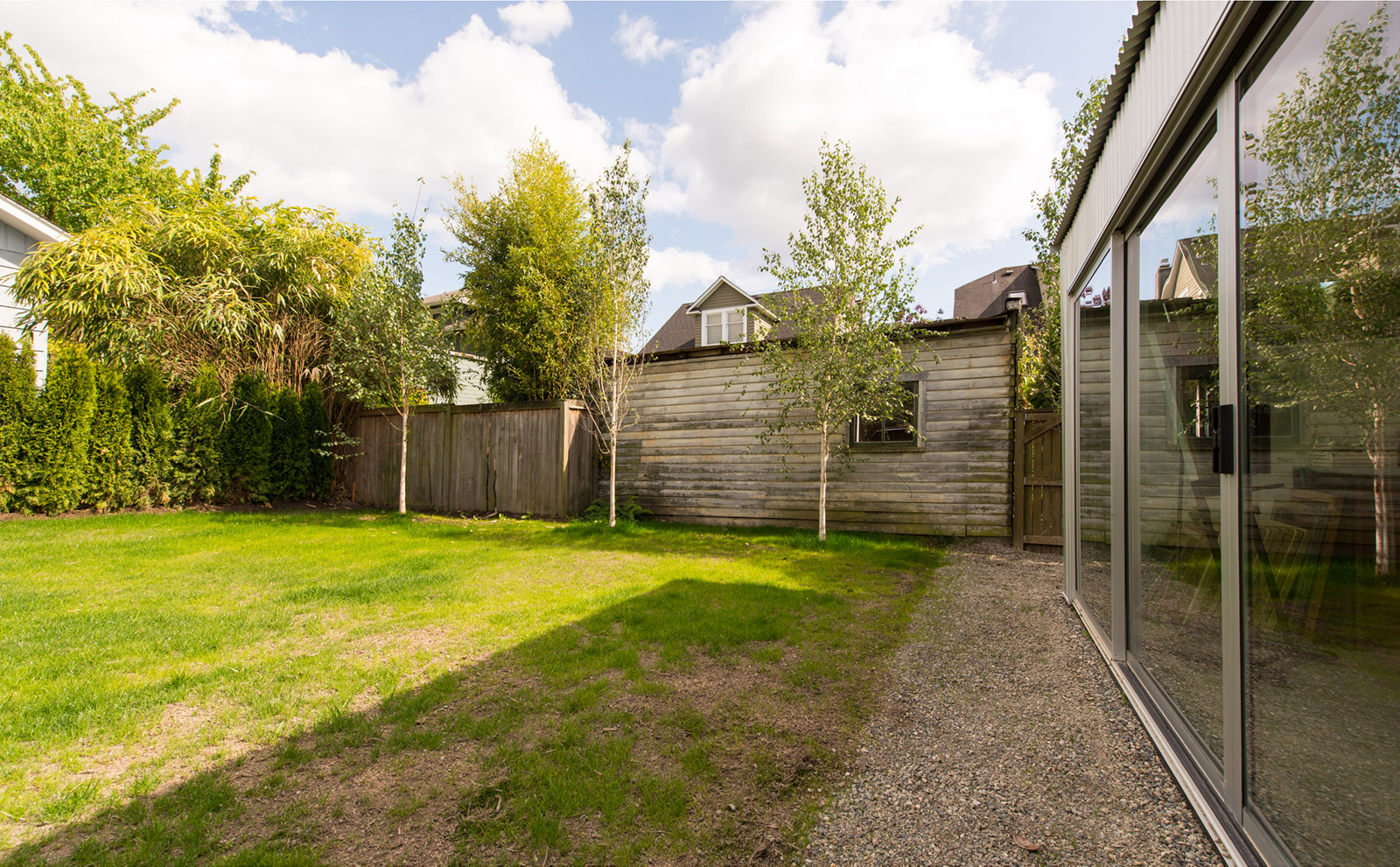
We’ll do a follow up on this project and others like it as the landscaping matures over time. Until then, cheers from Team BUILD.





